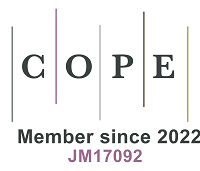REFERENCES
1. Błędzka, D.; Gromadzińska, J.; Wąsowicz, W. Parabens. From environmental studies to human health. Environ. Int. 2014, 67, 27-42.
2. Petric, Z.; Ružić, J.; Žuntar, I. The controversies of parabens - an overview nowadays. Acta. Pharm. 2021, 71, 17-32.
3. Wei, F.; Mortimer, M.; Cheng, H.; Sang, N.; Guo, L. H. Parabens as chemicals of emerging concern in the environment and humans: a review. Sci. Total. Environ. 2021, 778, 146150.
4. Cherian, P.; Zhu, J.; Bergfeld, W. F.; et al. Amended safety assessment of parabens as used in cosmetics. Int. J. Toxicol. 2020, 39, 5S-97S.
5. Final amended report on the safety assessment of methylparaben, ethylparaben, propylparaben, isopropylparaben, butylparaben, isobutylparaben, and benzylparaben as used in cosmetic products. Int. J. Toxicol. 2008, 27 Suppl 4, 1-82.
6. Xu, X.; Wu, H.; Terry, P. D.; Zhao, L.; Chen, J. Impact of paraben exposure on adiposity-related measures: an updated literature review of population-based studies. Int. J. Environ. Res. Public. Health. 2022, 19, 16268.
7. Matwiejczuk, N.; Galicka, A.; Brzóska, M. M. Review of the safety of application of cosmetic products containing parabens. J. Appl. Toxicol. 2020, 40, 176-210.
8. Radwan, P.; Wielgomas, B.; Radwan, M.; et al. Urinary concentration of selected nonpersistent endocrine disrupting chemicals-reproductive outcomes among women from a fertility clinic. Environ. Sci. Pollut. Res. Int. 2023, 30, 45088-96.
9. Hallberg, I.; Björvang, R. D.; Hadziosmanovic, N.; et al. Associations between lifestyle factors and levels of per- and polyfluoroalkyl substances (PFASs), phthalates and parabens in follicular fluid in women undergoing fertility treatment. J. Expo. Sci. Environ. Epidemiol. 2023, 33, 699-709.
10. Sandanger, T. M.; Huber, S.; Moe, M. K.; Braathen, T.; Leknes, H.; Lund, E. Plasma concentrations of parabens in postmenopausal women and self-reported use of personal care products: the NOWAC postgenome study. J. Expo. Sci. Environ. Epidemiol. 2011, 21, 595-600.
11. Li, Y.; Zheng, N.; Sun, S.; et al. Exposure estimates of parabens from personal care products compared with biomonitoring data in human hair from Northeast China. Ecotoxicol. Environ. Saf. 2023, 267, 115635.
12. SCCS Members. Opinion of the Scientific Committee on Consumer Safety (SCCS) - Final Opinion on propylparaben (CAS No 94-13-3, EC No 202-307-7). Regul. Toxicol. Pharmacol. 2021, 125, 105005.
13. European Union. Regulation (EC) No 1223/2009 of the European Parliament and of the Council of 30 November 2009 on cosmetic products (recast) (Text with EEA relevance). Available from: https://eur-lex.europa.eu/eli/reg/2009/1223. [Last accessed on 27 Dec 2024].
14. Market Research Survey. Personal care and cosmetic preservatives market. 2023. Available from: https://www.factmr.com/report/4638/personal-care-and-cosmetic-preservatives-market. [Last accessed on 27 Dec 2024].
15. Shaaban, H.; Alhajri, W. Usage patterns of cosmetic and personal care products among female population in Saudi Arabia: important factors for exposure and risk assessment. J. Environ. Public. Health. 2020, 2020, 8434508.
16. Alsharif, S. H.; Alqahtani, S. H.; Alqarehi, R. M.; et al. Knowledge, attitudes, and practices regarding skin care in Saudi Arabia: a cross-sectional, survey-based study. Cureus 2022, 14, e32490.
17.
18. Soni, M. G.; Carabin, I. G.; Burdock, G. A. Safety assessment of esters of p-hydroxybenzoic acid (parabens). Food. Chem. Toxicol. 2005, 43, 985-1015.
19. Chatterjee, S.; Adhikary, S.; Bhattacharya, S.; et al. Parabens as the double-edged sword: understanding the benefits and potential health risks. Sci. Total. Environ. 2024, 954, 176547.
20. Li, Y.; Zheng, N.; Li, Y.; et al. Exposure of childbearing-aged female to phthalates through the use of personal care products in China: an assessment of absorption via dermal and its risk characterization. Sci. Total. Environ. 2022, 807, 150980.
21. Guo, Y.; Wang, L.; Kannan, K. Phthalates and parabens in personal care products from China: concentrations and human exposure. Arch. Environ. Contam. Toxicol. 2014, 66, 113-9.
22. Pažoureková, S.; Hojerová, J.; Klimová, Z.; Lucová, M. Dermal absorption and hydrolysis of methylparaben in different vehicles through intact and damaged skin: using a pig-ear model in vitro. Food. Chem. Toxicol. 2013, 59, 754-65.
23. Shin, M. Y.; Choi, J. W.; Lee, S.; et al. Pharmacokinetics of transdermal methyl-, ethyl-, and propylparaben in humans following single dermal administration. Chemosphere 2023, 310, 136689.
24. United States Environmental Protection Agency (USEPA). Exposure factors handbook - Chapter 17: consumer products. Available from: https://www.epa.gov/sites/default/files/2015-09/documents/efh-chapter17.pdf. [Last accessed on 27 Dec 2024].
25. Wormuth, M.; Scheringer, M.; Hungerbühler, K. Linking the use of scented consumer products to consumer exposure to polycyclic musk fragrances. J. Ind. Ecol. 2005, 9, 237-58.
26. Cowan-Ellsberry, C. E.; Robison, S. H. Refining aggregate exposure: example using parabens. Regul. Toxicol. Pharmacol. 2009, 55, 321-9.
27. Al-Saleh, I.; Coskun, S.; Al-Doush, I.; et al. Couples exposure to phthalates and its influence on in vitro fertilization outcomes. Chemosphere 2019, 226, 597-606.
28. European Food Safety Authority (EFSA). Opinion of the Scientific Panel on food additives, flavourings, processing aids and materials in contact with food (AFC) related to para hydroxybenzoates (E 214-219). EFSA. J. 2004, 2, 83.
29. Honda, M.; Robinson, M.; Kannan, K. Parabens in human urine from several Asian countries, Greece, and the United States. Chemosphere 2018, 201, 13-9.
30. SCCP/1183/08. Opinion on parabens. 2008. Available from: https://ec.europa.eu/health/archive/ph_risk/committees/04_sccp/docs/sccp_o_138.pdf. [Last accessed on 27 Dec 2024].
31. Goumenou, M.; Tsatsakis, A. Proposing new approaches for the risk characterisation of single chemicals and chemical mixtures: the source related hazard quotient (HQS) and hazard index (HIS) and the adversity specific hazard index (HIA). Toxicol. Rep. 2019, 6, 632-6.
32. Teuschler, L. K.; Hertzberg, R. C. Current and future risk assessment guidelines, policy, and methods development for chemical mixtures. Toxicology 1995, 105, 137-44.
33. European Food Safety Authority (EFSA). Opinion of the Scientific Committee on a request from EFSA related to a harmonised approach for risk assessment of substances which are both genotoxic and carcinogenic. EFSA. J. 2005, 3, 282.
34. Raslan, R.; Hassim, M. H.; Chemmangattuvalappil, N. G.; Ng, D. K. S.; Ten, J. Y. Safety and health risk assessment methodology of dermal and inhalation exposure to formulated products ingredients. Regul. Toxicol. Pharmacol. 2020, 116, 104753.







